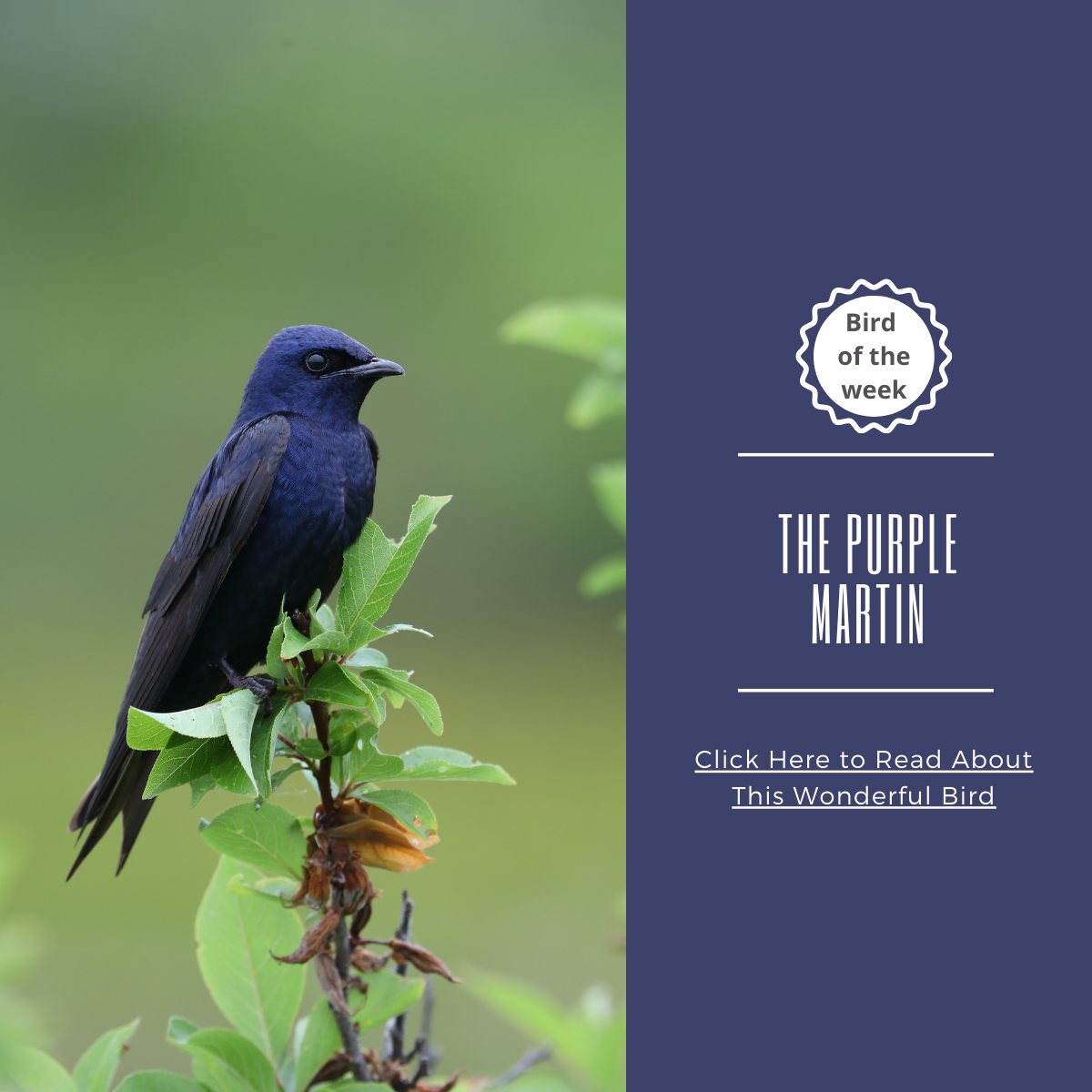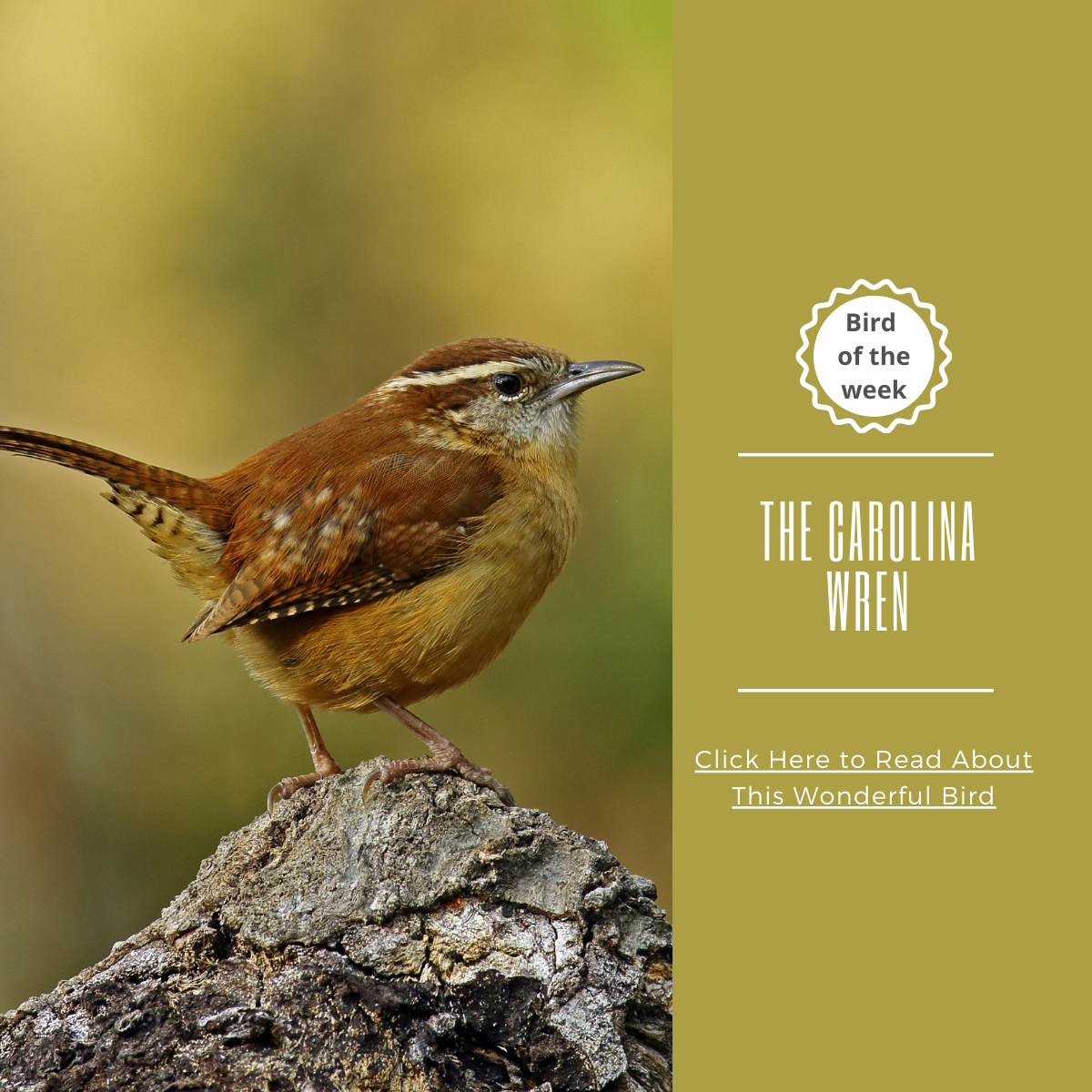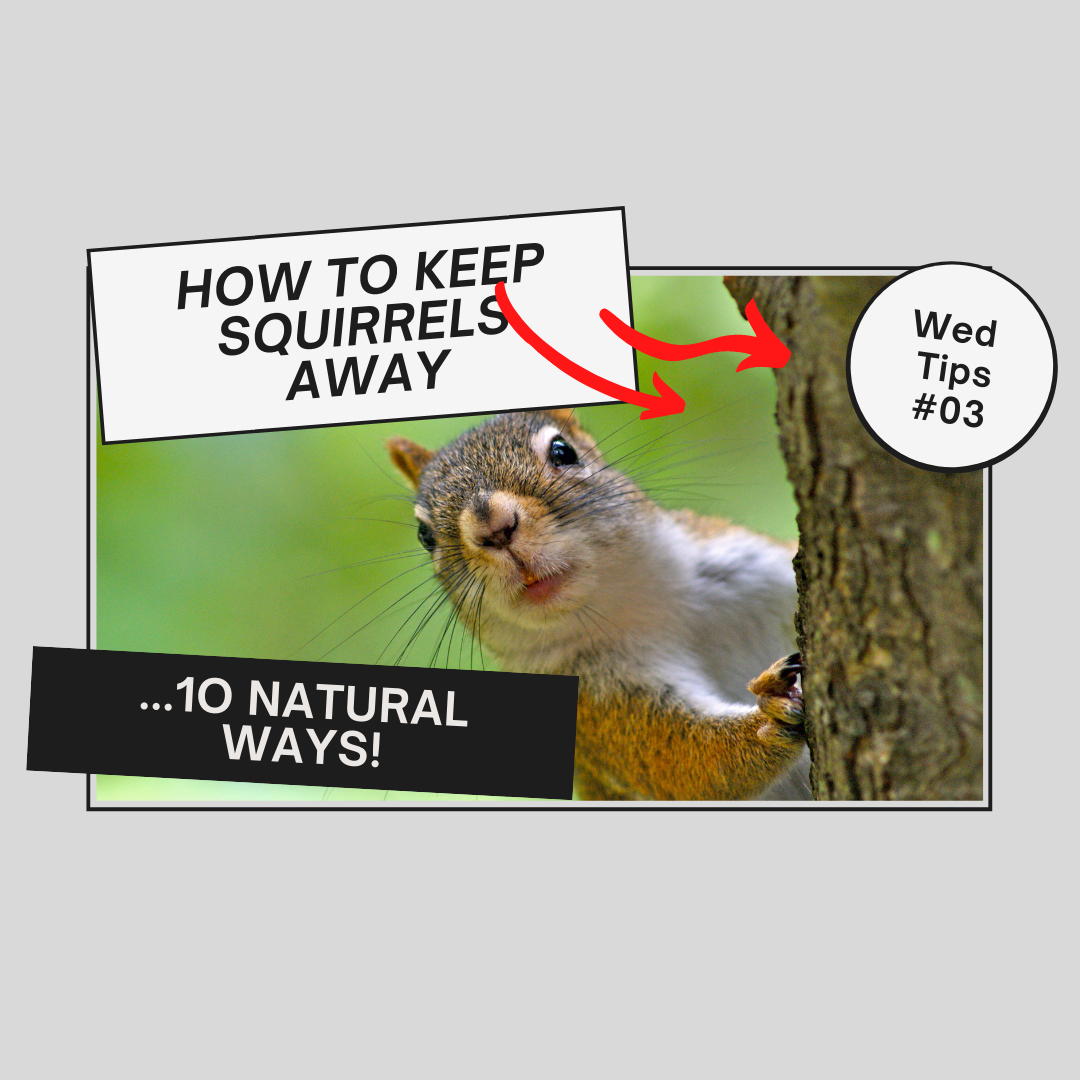Progne refers to Procne, a character in Greek mythology whom the Gods turned into a swallow to allow her to escape her husband. Subis is Latin and refers to a type of bird that destroys eagles' eggs.

Purple martins are the largest swallows in north America.
They are known for their speed (reaching 40 miles per hour,) their agility, performing crazy acrobatics as they pursue their prey and their characteristic flight pattern mix of rapid flapping and gliding. They are aerial insectivores, which means they eat insects in mid-flight. They are known to fly in circles in the sky before they dive down for their prey. They hardly touch ground unless it’s to pick up a dry leaf for their nest or an insect for lunch.
Love birds like I do?
One of the best ways to see birds up close is with a window feeder. Once they get used to you they will happily sit in your kitchen window and eat! Click here to see a unique bird feeder that might just do the trick!
When approaching their nesting area, they dive from the sky with great velocity with their wings tucked in, rather like superman!
Their name is misleading, as purple martins are not purple! Their midnight-blue plumage has that shimmering sheen because, like the Eastern Bluebird, the refraction of light gives them that navy blue or, at certain angles, that deep iridescent purple. Sometimes they may even appear green! It’s all a trick of the light.
Warning! Some confuse purple martins with starlings or even tree swallows. Don’t be mistaken! If you misidentify these lovelies and remove them from your property, you may be missing a treat as they won't return.
Purple martins are such a joy and if you are lucky, a family will come and nest in your garden. It will be like having guests in your home. They are gorgeous to watch and are a real “people bird” - you can watch them up close, as they feel quite at home in backyards, and in return, they will keep your backyard insect free!
Purple martins have fascinated people throughout the centuries. In 1908, Alexander Wilson wrote that he saw the Choctaw and Chickasaw tribes hollow out gourds which they placed on top of poles for the purple martins to nest and roost. The first European settlers adopted this custom and it is widely thought that this is why the purple martins became dependent on humans.
It was a win-win situation: The purple martins, who until then had created their nests in hollow trees, stopped building them and accepted native American hospitality. This worked for the purple martins, as the noise of village life kept owls, snakes and other predators away, and they got their nests made for them. For the native Americans, the payoff was that the purple martins became natural pest-hunters, friendly pets and to my eyes, gorgeous to watch.
Purple martins migrate from North America (even up in Alberta) and travel as far as Brazil and Argentina in the winter. The journey takes them about 2-3 months, as they take their sweet time resting and eating along the way.
When they arrive back to the eastern parts of North America, they prefer open spaces: towns, cities, parks, dunes or open fields.
The lifespan of a purple martin can be between 5-7 years. The eldest recorded purple martin was 13 years.
In case you missed last week's bird-of-the-week: The Carolina Wren
LOOKS

Purple martins are about 7-8 inches long with a 15 inch width wing-span. Once the adult males reach their second year, they become pitch black with a shimmering steel-blue glaze. The tail is slightly bifurcated.
If you look really close, you can see white tufts hidden in the rump and belly area.
Adult females have paler blue sheen patches on top. Their necks are greyish with lighter underparts.
Females juveniles look like adults but without the blue glaze on the back. Juvenile males are similar to females, except they have patches of black feathers on their chests.
WHAT PURPLE MARTINS EAT (AND HOW THEY HELP HUMANS)
Many encourage purple martins to their homes as they think that they eat almost 2000 mosquitoes a day. This is a misconception. Purple martins eat about 2000 insects - not including mosquitos. They fly around and feed at a height of 160-500 feet which is higher that where mosquitos live. Occasionally they will eat a few mosquitoes - but not in the thousands.
They eat mainly during the day and are known to eat dragonflies, cicadas, grasshoppers, katydids, moths, butterflies, dragonflies, damselflies, wasps, beetles, stink bugs, termites, mayflies, bees, midges, horse flies - and even fire ants.
Fire ants have spread from South America and build their nest mounds in the sand. Purple martins eat the queens and that’s how they remove fire ants - one nest at a time. These birds are great to have around!
Which bird feeders suit purple martins?
None!
Purple martins don’t feed on seeds and are not attracted to bird feeders. All we can do is avoid pesticides in the garden so the purple martins can gulp up the insects, as they eat them by the thousands!
You can also offer them crushed eggshells as a calcium supplement during the nesting season, which will serve the martins as well as bluebirds. Providing eggshells (dried and toasted to be sterile and “bite sized”) will also signal to them that you are a trustworthy source!
If you live next to a large body of water, that is a great advantage as purple martins love flying by and drinking in mid-flight. Birdbaths alone won’t do the trick but if you live near a lake or by a river, this is a huge plus to attract these shimmering blue flyers over to your backyard.
PURPLE MARTIN SOUNDS
Purple martins have beautiful, albeit noisy chirping. They chortle, rattle and croak. The males are quite poetic as they have various melodies: the guttural courtship song, a song for the rising sun and a song for the setting of the breeding season.
COURTING AND NESTING
Purple martin males return from South America after their winter break, usually to the same nesting grounds as the previous spring, if the nest is still available and safe.
Purple martins are monogamous and male and female tend to stay together during the mating season.
There is quite a competition from the females between juveniles in their first mating season and the older males. The females tend to prefer the juveniles. Those in full plumage, of course!
Even though some females will have flown north before the males, the males will still try to lure the females to a nest of his choosing. The lady makes her choice not by how well he is dressed, meaning the shimmer of his feathers, but how well he builds, meaning the nest he occupies.
This can be a man-made birdhouse, hollowed gourd, building, cliff, even traffic lights or street lamps - as long as they are made of wood or aluminum and hang from wires or sit on top of poles in open areas.

Purple martins are the only swallows who depend on humans for nesting so if you are going to provide a nesting facility, make sure you do it right! These flyers like their nests 10-12 inches deep, no less than 7 inches wide with 8-12 “rooms” in their nests. You can do it as the native Americans did by using empty gourds, or plastic gourds to keep predators at bay.
It’s a lot of fun to see them take our nest and make it their home. The female will fly around gathering materials for nesting: leaves, grass, pine needles, anything she can get her beak on - while the male will sing along, to make her know he's there protecting her.
This will go on for about 1-2 weeks until the female lays 3-7 smooth white eggs, about 4 per clutch, 1-2 broods per season - all depending on the age of the female. The older females lay more than the young inexperienced birds. The female is the incubator and will sit on the eggs for a little over two weeks.
The fledglings will stay with their parents for almost a month before flying the coop. From the day they are born, both parents feed them mainly insects and food high in protein up to 60 times a day! Even then, the parents will continue to show them how to forage for food and feed them as well. Once they have mastered the technique, the young'uns will leave home.
Watch this incredible video of a female incubating and protecting her eggs:
It is important to keep them safe. If you have a house cat, try to keep him inside, especially during fledgling times. The key predators for purple martins are cats, snakes, hawks and raccoons. European starlings and house sparrows are two species that do much harm, especially to our purple martins. The question is, do we let nature take its course - or do we give the martins a hand, and keep them away? It’s always the question of the century: do we improve nature by helping it? Or do we let it take its course?
FUN FACTS:
Not the best babysitter
Though incubating the eggs is up to the female, she sometimes leaves the nest with just leaves to cover the eggs. This endangers the eggs as swallows, starlings and others can destroy them.
Gravel for digestion
Though purple martins don’t need us for food, they sometimes eat fine gravel to use as a kind of grit to help their digestive system. Offering them a safe place with gravel is very helpful and will keep them coming!
Decoy!
Placing a small, dark-colored decoy bird near purple martin houses will cause them to check out your garden and possibly choose your nest.
Luring them to you with the sound of music
Playing recordings of purple martin chirps can cause them to stop by and examine your nest. If this ruse works, stop the recording, you don’t want them to call your bluff!
Teenagers who wake up late!
The purple martins don’t migrate together, but rather split up into genders and ages. Males arrive first and choose the good nesting grounds. Then come the females and after them come the juveniles - and because they come so late, get the “leftover” breeding grounds, not as attractive as those of the adults who got there first! Haven’t they heard of “the early bird who gets the worm…?”
A largest colony
The largest roosting colony of purple martins reached the crazy number of 700,000!
Black belly
The male purple martin is the only north American swallow with a black belly!
Tips for hosting purple martins!
Want to see more birds in your garden?
Bird feeders allow you to enjoy the company of pretty much any type of bird! Click here to see a unique bird feeder that will bring birds right to your kitchen window, with no mess!




3 comments
James Green
Why is my email address not approved for posting?
Jim Green
Thanks for your knowledgeable input for Martians. I’m having success with an 8 compartment house converted to a 4 compartment which is a must do procedure for them. It made all the difference!
I want to add gordes below the house next year . Any recommendation for number and placement of the gordes would be appreciated.
Thanks
Robert Johnson
This year I had 8 mating pairs. They all had babies but the heat this year in Springtown Texas reached up into the 110 F so a lot of the babies climbed out of their plastic gourd nest and fell to the ground. I lost about 11 babies.
Leave a comment
All comments are moderated before being published.
This site is protected by hCaptcha and the hCaptcha Privacy Policy and Terms of Service apply.